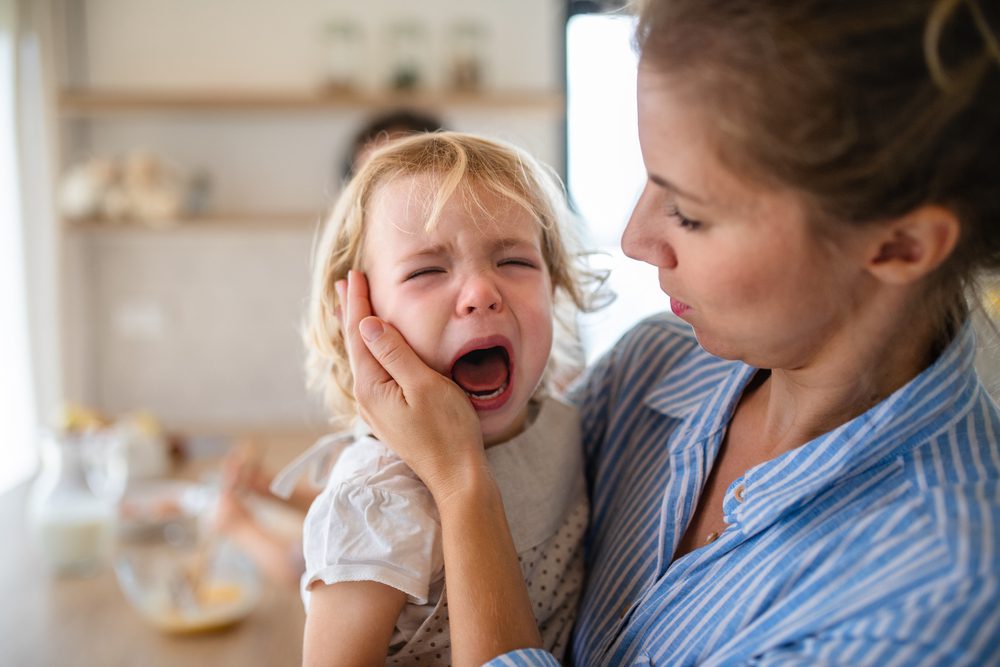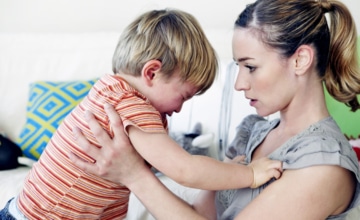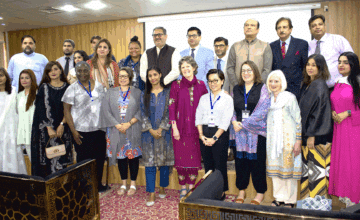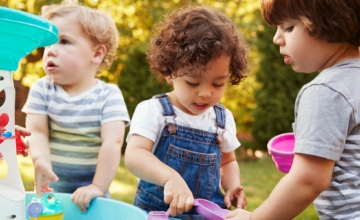How can early childhood professionals support the families they work with in handling these public moments of parenting “disaster” with grace and an eye to strengthening the parent-child relationship?
We’ve all seen the flood of articles, memes, and videos online that paint a judgmental picture of parents trying their best with crying babies, ornery toddlers, and prickly preschoolers. According to Tuning In, ZERO TO THREE’s National Parent Survey, 90% of moms and 85% of dads feel judged when it comes to their parenting skills. In other words, just 2 out of 20 moms and 3 out of 20 dads aren’t bothered by the disapproving frowns or raised eyebrows of their partners, other parents, and complete strangers in the supermarket—a very small number, for sure. The data show that all this judgment is shaping the experience of modern-day parenting. So the question is: How can early childhood professionals support the families they work with in handling these public moments of parenting “disaster” with grace and an eye to strengthening the parent-child relationship?
Imagine a common tantrum scenario: A parent is in the grocery store on the busiest shopping day of the week. She is trying to hustle her 3-year-old out of the candy aisle. But it’s too late. Suddenly, there’s an extra-large bag of chocolates clutched in his adorable little hand. The next thing she knows, he’s lying on the floor, kicking and screaming, and there are chocolates everywhere. She is mortified… and everyone in the adjacent check-out line is watching. How can she keep her cool? Here are some ideas to keep in mind the next time you are talking about public meltdowns with parents. You can also check out our new resource on managing tantrums for additional guidance for families.
Toddler tantrums and meltdowns are a part of toddler life.
Toddlers are discovering that they’re separate people from their parents. (Yay, that’s what’s supposed to happen at this age!) They want one thing. Parents want something else. But toddlers don’t have all the words they need to communicate their thoughts and feelings, and they’re never the people in charge (even if it doesn’t feel that way to parents). Typical development can be a recipe for frustration—and tantrums, and tears—for toddlers and sometimes for parents, too.
A child’s behavior is trying to tell parents something.
Wondering with parents about the meaning of a behavior—or helping them see a child’s behavior as a pattern (“the baby seems to get fussy when we go to places like the mall with bright lights, music, and lots of people”)—helps parents consider responses that are helpful and nurturing. Many parents are surprised to learn that a challenging behavior might be their child’s way of communicating a need, not just “acting out.”
Sometimes discovering the meaning behind a behavior takes time, trial and error, and observation. This process can be stressful and frustrating, especially when toddlers are still learning to regulate big emotions like anger or sadness. That’s where co-regulation for toddlers comes in—when adults stay calm and steady, they model how to handle strong feelings, which helps toddlers learn to calm themselves over time.
This is also where your support as an early childhood professional is critical: to guide parents through the process of wondering, to talk about limit-setting, and to validate that sometimes the answer isn’t clear. Sometimes the best thing a parent can do is just be present and supportive when their toddler is overwhelmed.
Remind parents that they are the “grown-ups.”
When someone small is screaming that you’re mean, it’s tough not to react. But toddlers rely on their grown-ups to anchor them emotionally. They’re still learning how to manage aggression, frustration, and disappointment. Helping toddlers manage aggression means showing them, gently but clearly, that hitting, kicking, or yelling isn’t how we express ourselves—while also making space for their big feelings.
Parents often feel like setting limits means they’re being harsh, especially if they didn’t have positive models growing up. Reassure them that they can be warm and firm at the same time. Saying, “You really don’t want the shot because you’re worried about the pinch,” validates a child’s feeling without changing the boundary. This kind of secure response builds secure attachment—a trusting relationship where the child feels safe, seen, and understood.
When parents stay calm, kids often calm faster too. That’s part of how mindfulness in early childhood works: when adults are aware of their own emotions and model steady, regulated behavior, children learn to do the same.
Tomorrow is another day.
There are always more chances to practice. Encourage parents to try a different response next time or to plan ahead for known tantrum triggers. Want to avoid a meltdown at the grocery store? Go at a calmer time of day. Take a detour around the candy aisle. Bring a favorite book or toy. Small tweaks can help reduce the number and intensity of outbursts.
Your presence is critical.
Many parents didn’t have models of calm, consistent discipline when they were growing up. They want to do things differently but may not know how. That’s where your guidance makes all the difference. Through shared reflection, planning, and your steady support, parents can learn to handle toddler tantrums with more confidence and care.
They don’t have to do it perfectly. They just have to keep showing up.





